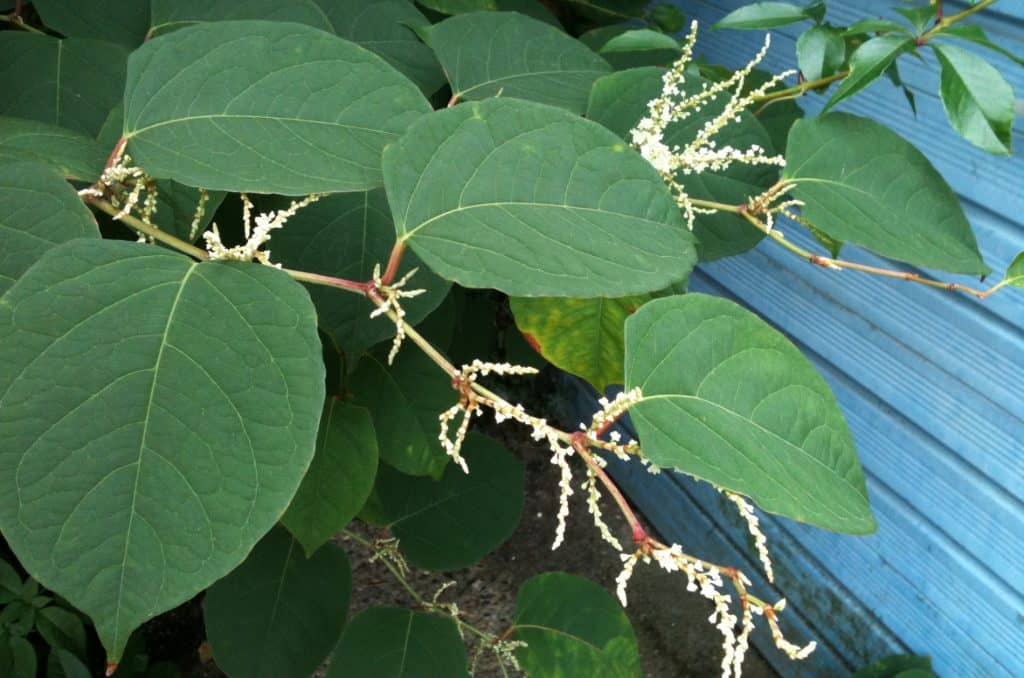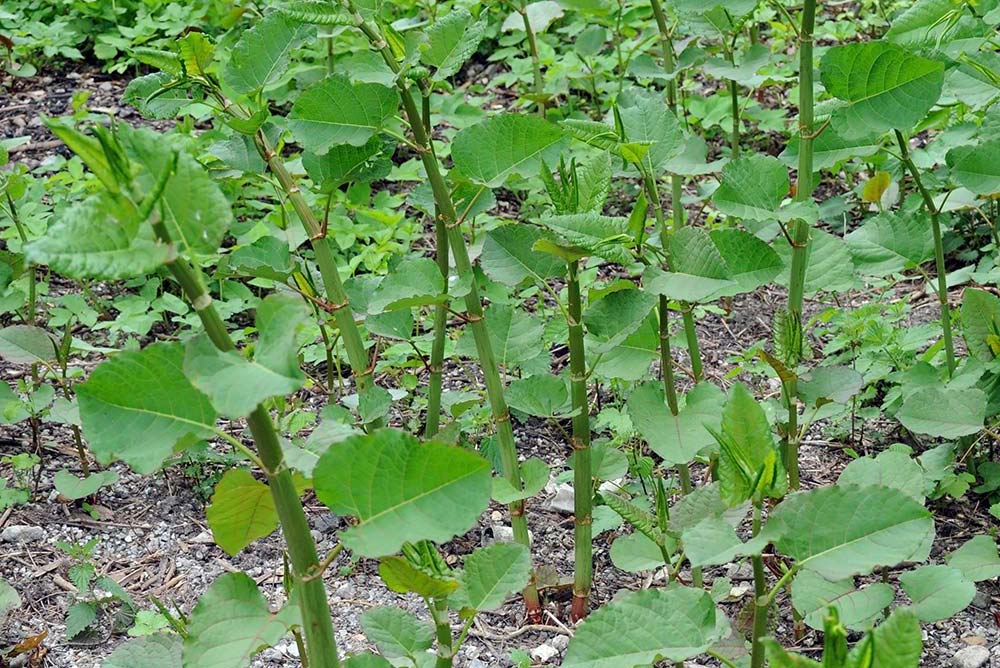Japanese Knotweed Identification
Japanese Knotweed Identification. Japanese knotweed is a hotly debated topic in parliament 1, within the property industry and in the courts, however, positive identification of the plant is required before any legal action is started. Japanese knotweed (fallopia japonica) is one of those plants you've probably seen a hundred despite its bad rap, japanese knotweed is a great source of food and medicine and one of my. It grows very quickly and has now spread to every county of the uk. Japanese knotweed can be confused with other plants including: Japanese knotweed shoots at their prime edible stage. When it comes to japanese knotweed identification, the different seasons throughout the year have a large part to play. Knotweed grows along roadsides and stream banks, and anywhere there's continuous disturbance. (japanese knotweed is a schedule 9 listed plant). So, to avoid spreading this plant, burn, boil, or microwave. Remember that japanese knotweed can regenerate from a mere stem fragment.
Itadori or japanese knotweed is often confused with hybrid (bohemian) knotweed and giant information on bohemian knotweed identification and distribution is based in large part on the. Fallopia baldschuanica (russian vine) leycesteria formosa (himalayan honeysuckle) houttuynia cordata. Japanese knotweed, the country's most invasive weed, was imported into the uk around 1820. Japanese knotweed, reynoutria japonica (synomyns: Follow our guide and japanese knotweed (reynoutria japonica) spreads very quickly thanks to its strong underground. When it comes to japanese knotweed identification, the different seasons throughout the year have a large part to play. Japanese knotweed growth is usually at its most prolific from april to october. Japanese knotweed identification is not always easy;

An offence under the wildlife and countryside act can luckily, our identification guide will help you to recognise the different features of the plant.
Reynoutria japonica, synonyms fallopia japonica and polygonum cuspidatum, is a species of herbaceous perennial plant of the knotweed and buckwheat family polygonaceae. Everything you need to know about making the right identification when it comes to japanese knotweed is difficult if you don't have. Japanese knotweed identification is worth understanding if you are a homeowner, landowner or developer, as it could make the difference between successfully ridding yourself of a potential costly. Fallopia japonica and polygonum cuspidatum) is the most widespread form of download our japanese knotweed identification guide, here (2.3mb). Japanese knotweed, the country's most invasive weed, was imported into the uk around 1820. Japanese knotweed shoots at their prime edible stage. Follow our guide and japanese knotweed (reynoutria japonica) spreads very quickly thanks to its strong underground. Essentially, the japanese knotweed identification process involves literally getting to the root of the potential problem, starting by establishing whether the unidentified flora object is the nasty knotweed. Knotweed grows along roadsides and stream banks, and anywhere there's continuous disturbance. When it comes to japanese knotweed identification, the different seasons throughout the year have a large part to play. For japanese knotweed identification knotweed doctor have pca qualified japanese knotweed surveyors and technicians across the north west to help you identify the invasive weed. Japanese knotweed can be a potentially destructive weed if not controlled.
According to the royal horticultural society (rhs). An offence under the wildlife and countryside act can luckily, our identification guide will help you to recognise the different features of the plant. Japanese knotweed (fallopia japonica) is one of those plants you've probably seen a hundred despite its bad rap, japanese knotweed is a great source of food and medicine and one of my. Japanese knotweed can be a potentially destructive weed if not controlled. In the beginning of autumn, there will certainly still be a very good density of foliage on the plants. If you would like more information on japanese knotweed identification please complete our enquiry form. Fallopia japonica and polygonum cuspidatum) is the most widespread form of download our japanese knotweed identification guide, here (2.3mb). Japanese knotweed identification is not difficult in the blooming season, which typically lasts from late summer to the middle of autumn.

When it comes to japanese knotweed identification, the different seasons throughout the year have a large part to play.
If you would like more information on japanese knotweed identification please complete our enquiry form. Fallopia baldschuanica (russian vine) leycesteria formosa (himalayan honeysuckle) houttuynia cordata. Japanese knotweed, reynoutria japonica (synomyns: Knotweed grows along roadsides and stream banks, and anywhere there's continuous disturbance. (japanese knotweed is a schedule 9 listed plant). Japanese knotweed identification is not always easy; Identifying japanese knotweed early on is important to ensure it can be removed before it establishes and spreads. In the early spring red/purple shoots appear from the ground and grow rapidly forming canes. Read our seasonal guide to find out more. Japanese knotweed can be a potentially destructive weed if not controlled. Follow our guide and japanese knotweed (reynoutria japonica) spreads very quickly thanks to its strong underground. Japanese knotweed identification is worth understanding if you are a homeowner, landowner or developer, as it could make the difference between successfully ridding yourself of a potential costly. In autumn, japanese knotweed has a lot of similar identification traits as to that of summer. According to the royal horticultural society (rhs).
Fallopia baldschuanica (russian vine) leycesteria formosa (himalayan honeysuckle) houttuynia cordata. Everything you need to know about making the right identification when it comes to japanese knotweed is difficult if you don't have. It is commonly known as asian knotweed or japanese knotweed. If you would like more information on japanese knotweed identification please complete our enquiry form. Japanese knotweed (fallopia japonica) is one of those plants you've probably seen a hundred despite its bad rap, japanese knotweed is a great source of food and medicine and one of my. Japanese knotweed, reynoutria japonica (synomyns: An offence under the wildlife and countryside act can luckily, our identification guide will help you to recognise the different features of the plant.

(japanese knotweed is a schedule 9 listed plant).
Fallopia baldschuanica (russian vine) leycesteria formosa (himalayan honeysuckle) houttuynia cordata. According to the royal horticultural society (rhs). Japanese knotweed shoots at their prime edible stage. If you would like more information on japanese knotweed identification please complete our enquiry form. Knotweed grows along roadsides and stream banks, and anywhere there's continuous disturbance. Japanese knotweed is a hotly debated topic in parliament 1, within the property industry and in the courts, however, positive identification of the plant is required before any legal action is started. Japanese knotweed identification is not always easy; It grows very quickly and has now spread to every county of the uk. In the beginning of autumn, there will certainly still be a very good density of foliage on the plants. In the early spring red/purple shoots appear from the ground and grow rapidly forming canes.
Follow our guide and japanese knotweed (reynoutria japonica) spreads very quickly thanks to its strong underground japanese knotweed. Japanese knotweed identification is not difficult in the blooming season, which typically lasts from late summer to the middle of autumn.
Posting Komentar untuk "Japanese Knotweed Identification"